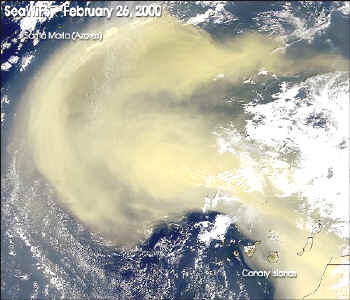
|
Background |
|
Background
Observations for obtaining
information on climatic parameters are in progress at the Campus of the University
of Ilorin, Ilorin, Nigeria, in sub-Sahel Africa. The site is located in a
desert transition zone between the Sahara and the savanna of upper Nigeria.
This activity is a collaborative effort between the University of Ilorin,
the Department of Atmospheric and Oceanic Science, University
of Maryland , NASA Goddard Space
Flight Center , and the NOAA/Environmental
Research Laboratories (ERL)/Climate Monitoring and Diagnostics Laboratory (CMDL) . Monitored are
geophysical parameters required for the understanding of climate change and
for supporting current and future satellite observations, which are being
obtained under the NASA Earth Observing
System (EOS) program for missions like CERES and MODIS. Measurement
of aerosol optical depth started at the site in 1987. Observation of key components
of the surface radiation budget were added in September of 1992 and upgraded
in May of 1995. The ultimate objective of this collaborative
effort is to upgrade these observations to meet the requirements of the World Climate Research Program (WCRP) Baseline
Surface Radiation Network (BSRN).

(Image Courtesy: Norman
Kuring, SeaWIFS project)
A massive sandstorm blowing off
the northwest African desert blankets hundreds of thousands of square
miles of the eastern Atlantic Ocean with a dense cloud of Saharan sand.
The massive nature of this particular storm was first seen in this SeaWiFS
image acquired February 26, 2000 when it reached over 1000 miles into the
Atlantic.
|
